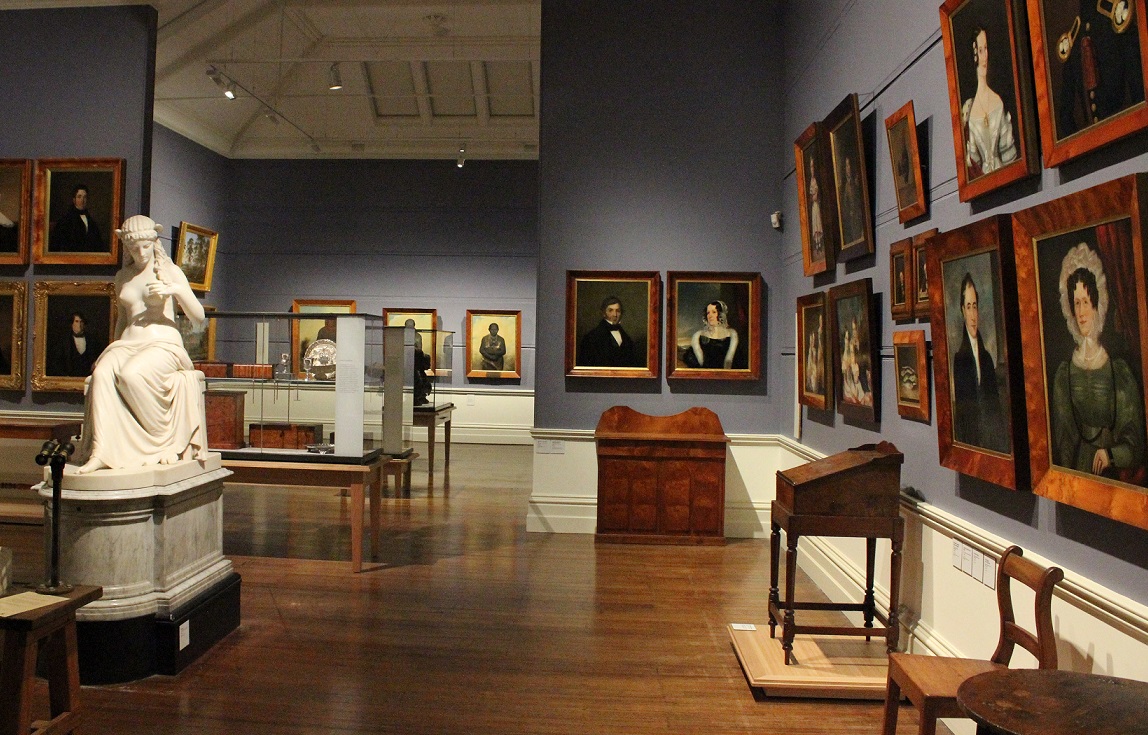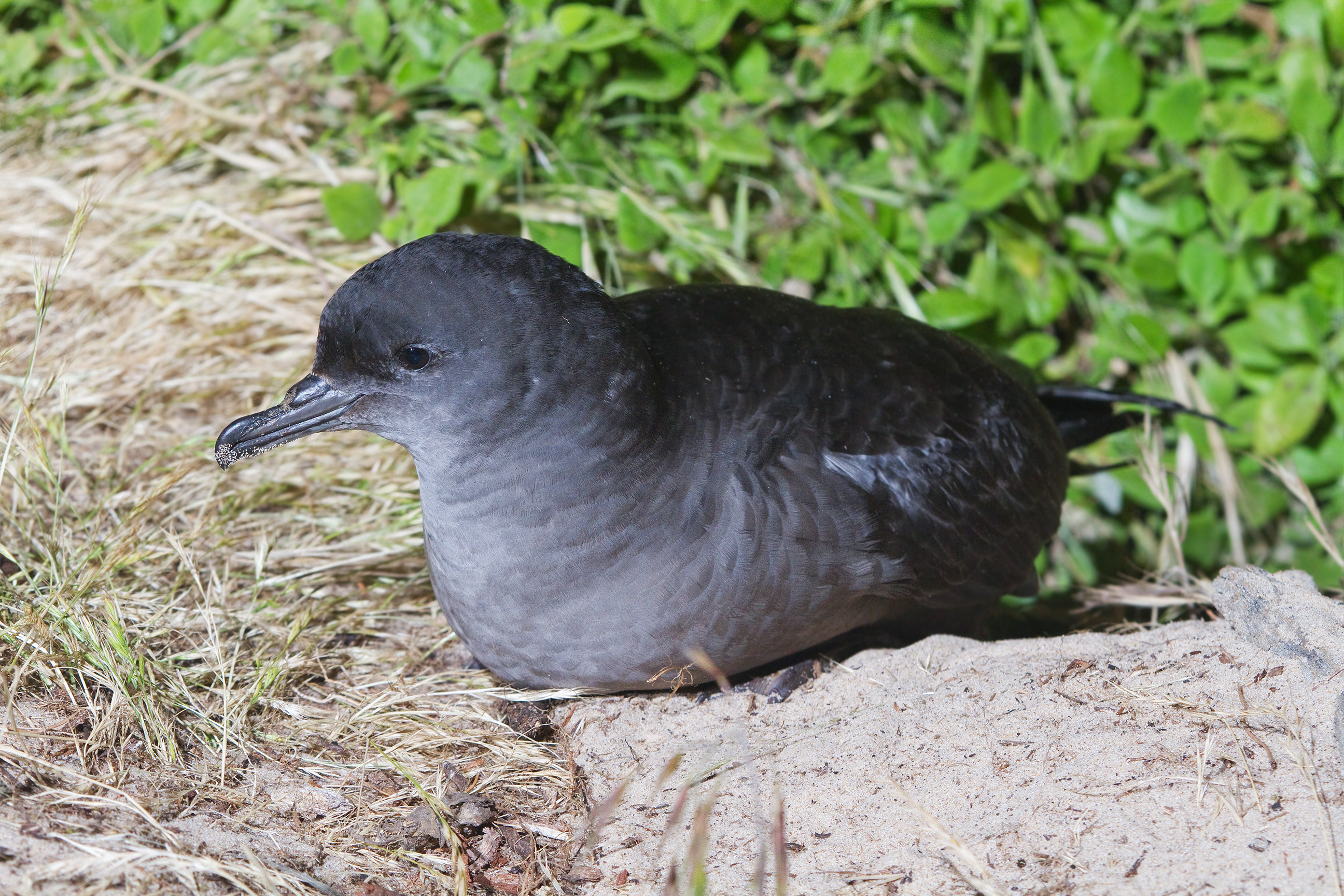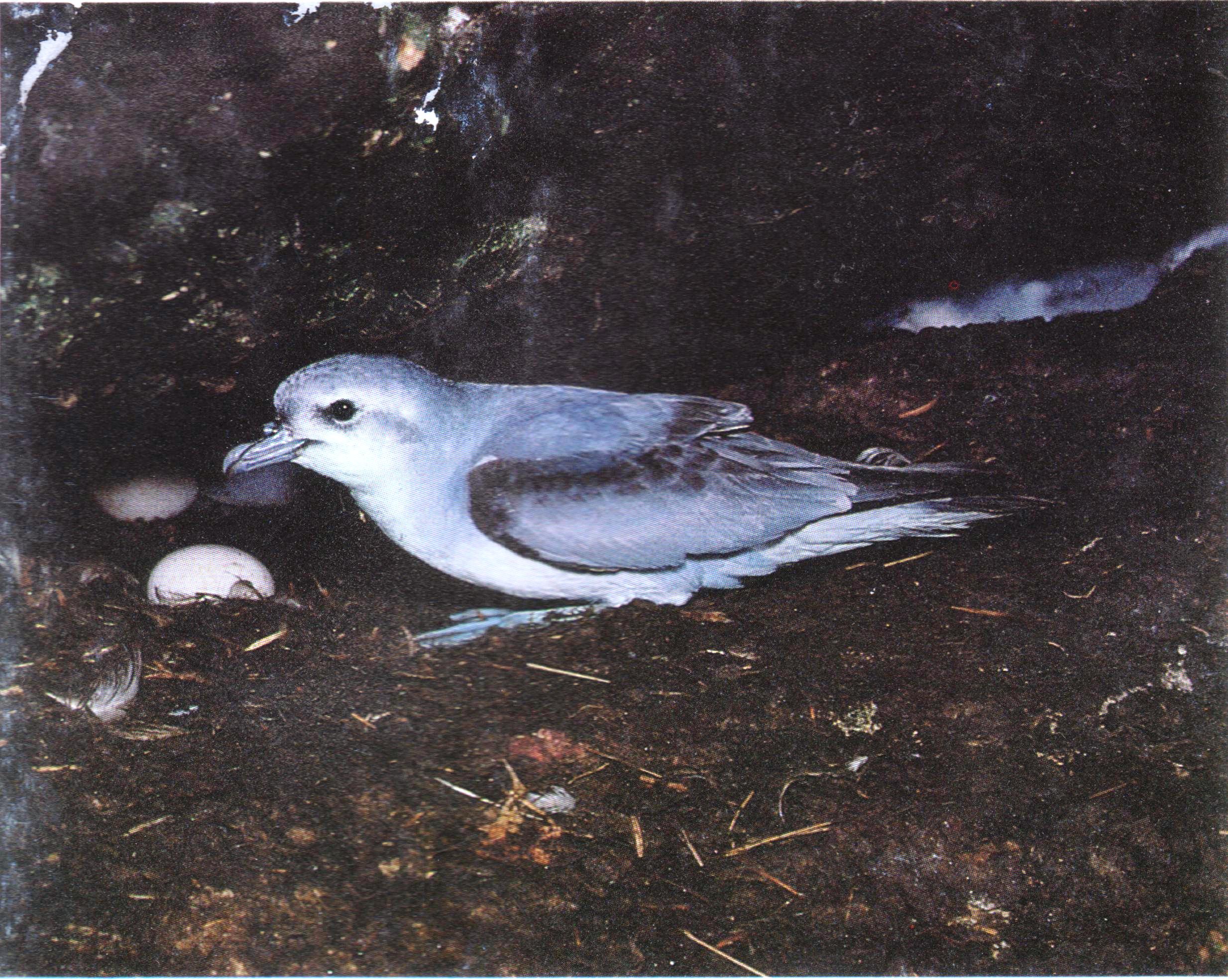|
South East Mutton Bird Islet
South East Mutton Bird Islet is a steep unpopulated islet located close to the south-western coast of Tasmania, Australia. Situated south of where the mouth of Port Davey meets the Southern Ocean, the islet is one of the eight islands that comprise the Mutton Bird Islands Group. The South East Mutton Bird Islet is part of the Southwest National Park and the Tasmanian Wilderness World Heritage Site. Fauna The islet is part of the Port Davey Islands Important Bird Area, so identified by BirdLife International because of its importance for breeding seabirds. Recorded breeding seabird species are the short-tailed shearwater (250 pairs), fairy prion (1000 pairs), black-faced cormorant and silver gull. See also * List of islands of Tasmania Tasmania is the smallest and southernmost state of Australia. The Tasmanian mainland itself is an island, with an area of - 94.1% of the total land area of the state. The other islands have a combined area of , for a cumulative total ... [...More Info...] [...Related Items...] OR: [Wikipedia] [Google] [Baidu] |
Landsat
The Landsat program is the longest-running enterprise for acquisition of satellite imagery of Earth. It is a joint NASA / USGS program. On 23 July 1972, the Earth Resources Technology Satellite was launched. This was eventually renamed to Landsat 1 in 1975. The most recent, Landsat 9, was launched on 27 September 2021. The instruments on the Landsat satellites have acquired millions of images. The images, archived in the United States and at Landsat receiving stations around the world, are a unique resource for global change research and applications in agriculture, cartography, geology, forestry, regional planning, surveillance and education, and can be viewed through the U.S. Geological Survey (USGS) "EarthExplorer" website. Landsat 7 data has eight spectral bands with spatial resolutions ranging from ; the temporal resolution is 16 days. Landsat images are usually divided into scenes for easy downloading. Each Landsat scene is about 115 miles long and 115 miles wide (or ... [...More Info...] [...Related Items...] OR: [Wikipedia] [Google] [Baidu] |
Tasmanian Museum And Art Gallery
The Tasmanian Museum and Art Gallery (TMAG) is a museum located in Hobart, Tasmania. The museum was established in 1846, by the Royal Society of Tasmania, the oldest Royal Society outside England. The TMAG receives 400,000 visitors annually. History The museum was officially created in 1848, though the collections it housed were much created earlier. It merged a number of disparate collections, including that of the Royal Society of Tasmania. The Mechanics' Institution of Hobart, Van Diemen's Land Agricultural Society and Van Diemen's Land Scientific Society had each attempted to found a museum earlier than this date, the most successful of these being the Mechanics' Institution, but little record remains of what happened to these efforts. Sir John Eardley-Wilmot, 1st Baronet, during his period was Lt. Governor of Tasmania, did much of the work that led to the modern museum. The museum was noted as first being an established institution in the 1848 minutes of the Royal Societ ... [...More Info...] [...Related Items...] OR: [Wikipedia] [Google] [Baidu] |
Protected Areas Of Tasmania
Protected areas of Tasmania consist of protected areas located within Tasmania and its immediate onshore waters, including Macquarie Island. It includes areas of crown land (withheld land) managed by Tasmanian Government agencies as well as private reserves. As of 2016, 52% of Tasmania's land area has some form of reservation classification, the majority is managed by the Tasmania Parks & Wildlife Service (about 42% of total Tasmanian land area). Marine protected areas cover about 7.9% of state waters. Within each classification of reserve there may be a variation of IUCN categories Australia is a signatory to the Convention of Biological Diversity and as such has obligations to report the status of its National Reserve System.IUCN provides on its website a prescription for activities consistent with the categorisation system. Changes made to the ''Nature Conservation Act 2002'' in 2014 permit timber harvesting. These changes made in addition to the already established right t ... [...More Info...] [...Related Items...] OR: [Wikipedia] [Google] [Baidu] |
Islands Of South West Tasmania
An island (or isle) is an isolated piece of habitat that is surrounded by a dramatically different habitat, such as water. Very small islands such as emergent land features on atolls can be called islets, skerries, cays or keys. An island in a river or a lake island may be called an eyot or ait, and a small island off the coast may be called a holm. Sedimentary islands in the Ganges delta are called chars. A grouping of geographically or geologically related islands, such as the Philippines, is referred to as an archipelago. There are two main types of islands in the sea: continental and oceanic. There are also artificial islands, which are man-made. Etymology The word ''island'' derives from Middle English ''iland'', from Old English ''igland'' (from ''ig'' or ''ieg'', similarly meaning 'island' when used independently, and -land carrying its contemporary meaning; cf. Dutch ''eiland'' ("island"), German ''Eiland'' ("small island")). However, the spelling of the word ... [...More Info...] [...Related Items...] OR: [Wikipedia] [Google] [Baidu] |
List Of Islands Of Tasmania
Tasmania is the smallest and southernmost state of Australia. The Tasmanian mainland itself is an island, with an area of - 94.1% of the total land area of the state. The other islands have a combined area of , for a cumulative total of 99.75% of the state. About 1000 smaller islands make up the remaining of total land area. Classification structure A considerable number of Tasmanian islands are identified as being in island groups, including the Breaksea, Furneaux, Hogan, Hunter, Kent, Maatsuyker, Mutton Bird, New Year, Swainson, Trumpeter, and Waterhouse groups. Regions Similar to Regions of Tasmania the islands are generally distinguished by the coast that they are adjacent to, as well as Bass Strait - the main separation from the mainland state of Victoria. Five regions are aligned to the north coast and Bass Strait - ''North West Islands'' (including King Island), ''North Coast Islands'', ''North Bass Strait Islands'', ''Furneaux Islands'', and ''North East Islands' ... [...More Info...] [...Related Items...] OR: [Wikipedia] [Google] [Baidu] |
Silver Gull
The silver gull (''Chroicocephalus novaehollandiae'') is the most common gull of Australia. It has been found throughout the continent, but particularly at or near coastal areas. It is smaller than the Pacific gull (''Larus pacificus''), which also lives in Australia. The silver gull should not be confused with the herring gull, which is called "silver gull" in many other languages (scientific name ''Larus argentatus'', German ''Silbermöwe'', French ''Goéland argenté'', Dutch ''zilvermeeuw''), but is a much larger, robust gull with no overlap in range. Taxonomy It has traditionally been placed in the genus ''Larus'', as is the case with many gulls, but is now placed in the genus ''Chroicocephalus''. Hartlaub's gull (''C. hartlaubii'') of South Africa was formerly sometimes considered to be subspecies of the silver gull. There are three subspecies: * ''C. n. forsteri'' ( Mathews, 1912) – north and northeast Australia, New Caledonia, Loyalty Islands * ''C. n. novaehollan ... [...More Info...] [...Related Items...] OR: [Wikipedia] [Google] [Baidu] |
Black-faced Cormorant
The black-faced cormorant (''Phalacrocorax fuscescens''), also known as the black-faced shag, is a medium-sized member of the cormorant family. Upperparts, including facial skin and bill, are black, with white underparts. It is endemic to coastal regions of southern Australia. Description Like other cormorant species, the black-faced cormorant is a large aquatic bird, with a long hooked bill, webbed feet, and monochromatic plumage. This is one of the largest cormorants found in south-western Australia and has pied plumage with the upper half of its body black and the undersides white. Its face is naked and black, hence the "black-faced" name, and the tail, feet, and thighs are also black. The back feathers are glossy, and its bill is dark grey with a prominent hook at the tip. It has blue-green eyes. When flying, it holds its head level or lower than its body and holds its wings in a cross-shape like most cormorants. Species that are similar in appearance include the pied c ... [...More Info...] [...Related Items...] OR: [Wikipedia] [Google] [Baidu] |
Fairy Prion
The fairy prion (''Pachyptila turtur'') is a small seabird with the standard prion plumage of blue-grey upperparts with a prominent dark "M" marking and white underneath. The sexes are alike. This is a small prion of the low subantarctic and subtropic seas. Taxonomy The fairy prion was formally described in 1820 by the German naturalist Heinrich Kuhl under the binomial name ''Procellaria turtur''. It is now placed with the other prions in the genus ''Pachyptila'' that was introduced in 1811 by Johann Karl Wilhelm Illiger. The genus name combines the Ancient Greek ''pakhus '' meaning "dense" or "thick" with ''ptilon'' meaning "feather" or "plumage". The specific epithet ''turtur'' is Latin for "turtle dove". The word comes from the Ancient Greek word meaning "a saw", which is in reference to its serrated edges of its bill.Gotch, A. T. (1995) The fairy prion is a member of the genus ''Pachyptila'', and along with the blue petrel makes up the prions. They in turn are members of ... [...More Info...] [...Related Items...] OR: [Wikipedia] [Google] [Baidu] |
Short-tailed Shearwater
The short-tailed shearwater or slender-billed shearwater (''Ardenna tenuirostris''; formerly ''Puffinus tenuirostris''), also called yolla or moonbird, and commonly known as the muttonbird in Australia, is the most abundant seabird species in Australian waters, and is one of the few Australian native birds in which the chicks are commercially harvested. It is a migratory species that breeds mainly on small islands in Bass Strait and Tasmania and migrates to the Northern Hemisphere for the boreal summer. Taxonomy This shearwater appears to be related to the sooty and great shearwaters, which are also blunt-tailed, black-billed species, but its precise relationships are obscure (Austin, 1996; Austin ''et al.'', 2004). These are among the larger species of shearwater, which have been moved to a separate genus, ''Ardenna'' based on a phylogenetic analysis of mitochondrial DNA (Penhallurick & Wink, 2004). Ecology Each parent feeds the single chick for 2–3 days and then leaves for ... [...More Info...] [...Related Items...] OR: [Wikipedia] [Google] [Baidu] |
Seabird
Seabirds (also known as marine birds) are birds that are adapted to life within the marine environment. While seabirds vary greatly in lifestyle, behaviour and physiology, they often exhibit striking convergent evolution, as the same environmental problems and feeding niches have resulted in similar adaptations. The first seabirds evolved in the Cretaceous period, and modern seabird families emerged in the Paleogene. In general, seabirds live longer, breed later and have fewer young than other birds do, but they invest a great deal of time in their young. Most species nest in colonies, which can vary in size from a few dozen birds to millions. Many species are famous for undertaking long annual migrations, crossing the equator or circumnavigating the Earth in some cases. They feed both at the ocean's surface and below it, and even feed on each other. Seabirds can be highly pelagic, coastal, or in some cases spend a part of the year away from the sea entirely. Seabirds and ... [...More Info...] [...Related Items...] OR: [Wikipedia] [Google] [Baidu] |
BirdLife International
BirdLife International is a global partnership of non-governmental organizations that strives to conserve birds and their habitats. BirdLife International's priorities include preventing extinction of bird species, identifying and safeguarding important sites for birds, maintaining and restoring key bird habitats, and empowering conservationists worldwide. It has a membership of more than 2.5 million people across 116 country partner organizations, including the Royal Society for the Protection of Birds, the Wild Bird Society of Japan, the National Audubon Society and American Bird Conservancy. BirdLife International has identified 13,000 Important Bird and Biodiversity Areas and is the official International Union for Conservation of Nature’s Red List authority for birds. As of 2015, BirdLife International has established that 1,375 bird species (13% of the total) are threatened with extinction ( critically endangered, endangered or vulnerable). BirdLife International p ... [...More Info...] [...Related Items...] OR: [Wikipedia] [Google] [Baidu] |
Port Davey Islands Important Bird Area
The Port Davey Islands Important Bird Area comprises over 20 small, rocky islands scattered both within, and in the vicinity of, the mouth of Port Davey, an inlet on the south-west coast of Tasmania, Australia. They all lie within the Southwest National Park and are important for breeding seabirds. Birds The sparsely vegetated islands, with a collective area of 163 ha, have been identified by BirdLife International as an Important Bird Area (IBA) because together they support over 1% of the world populations of short-tailed shearwaters (c. 950,000 breeding pairs), fairy prions (c. 27,000 breeding pairs), little penguins (c. 16,500 breeding pairs) and black-faced cormorants (up to 230 breeding pairs). Pacific gulls and sooty oystercatcher The sooty oystercatcher (''Haematopus fuliginosus'') is a species of oystercatcher. It is a wading bird endemic to Australia and commonly found on its coastline. It prefers rocky coastlines, but will occasionally live in estuari ... [...More Info...] [...Related Items...] OR: [Wikipedia] [Google] [Baidu] |








